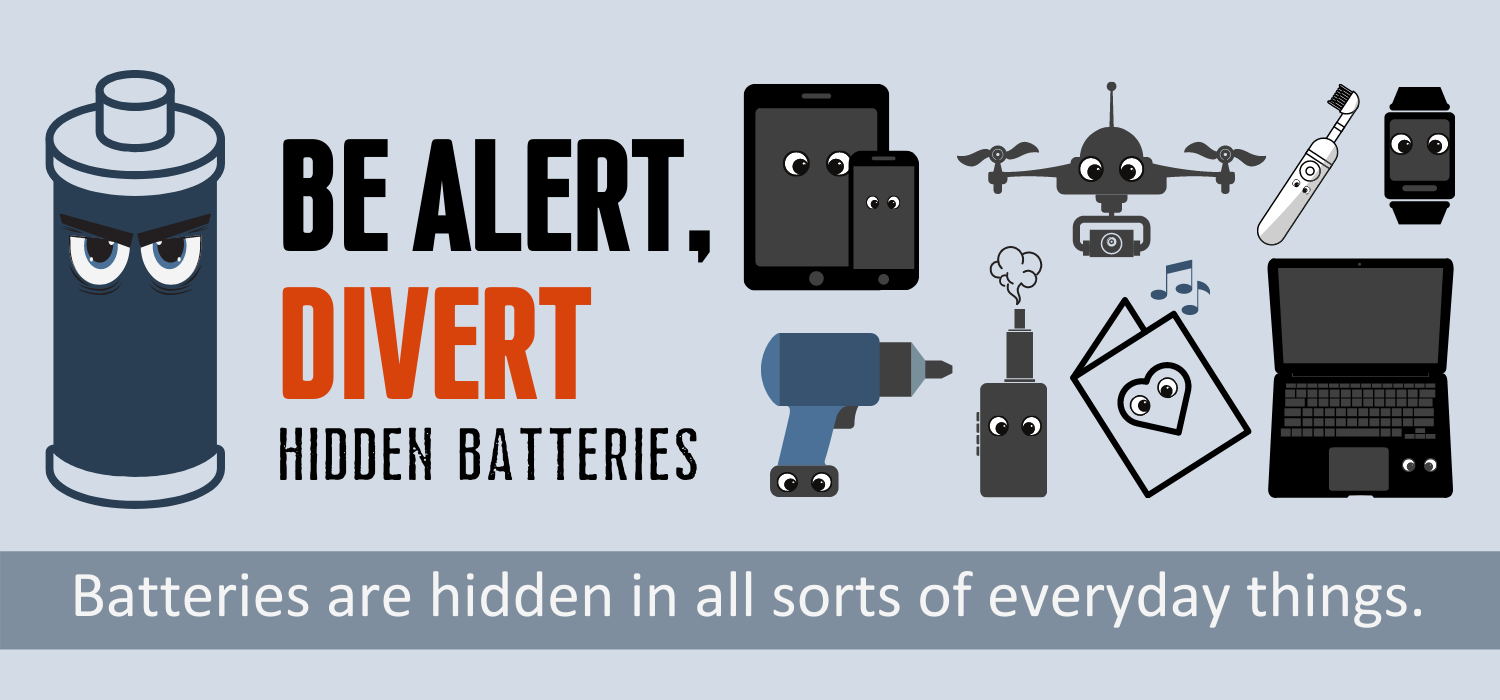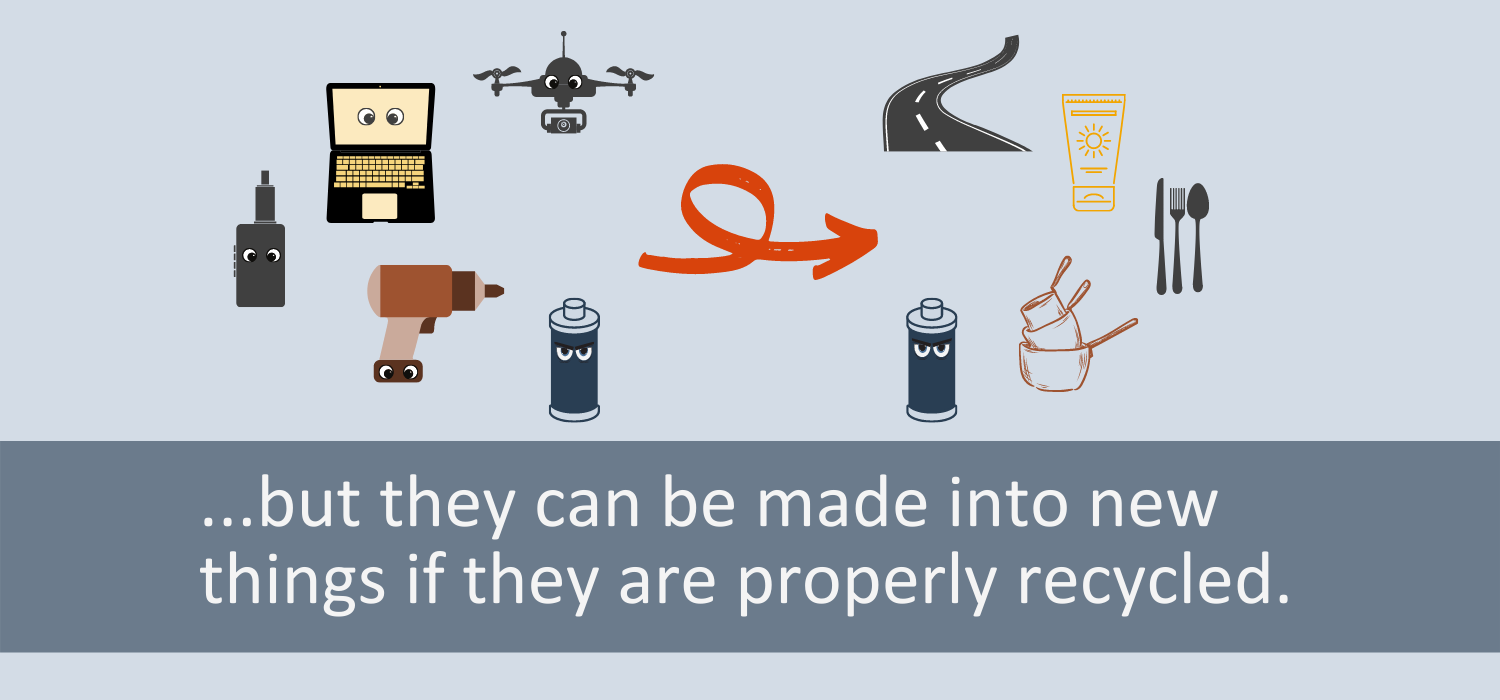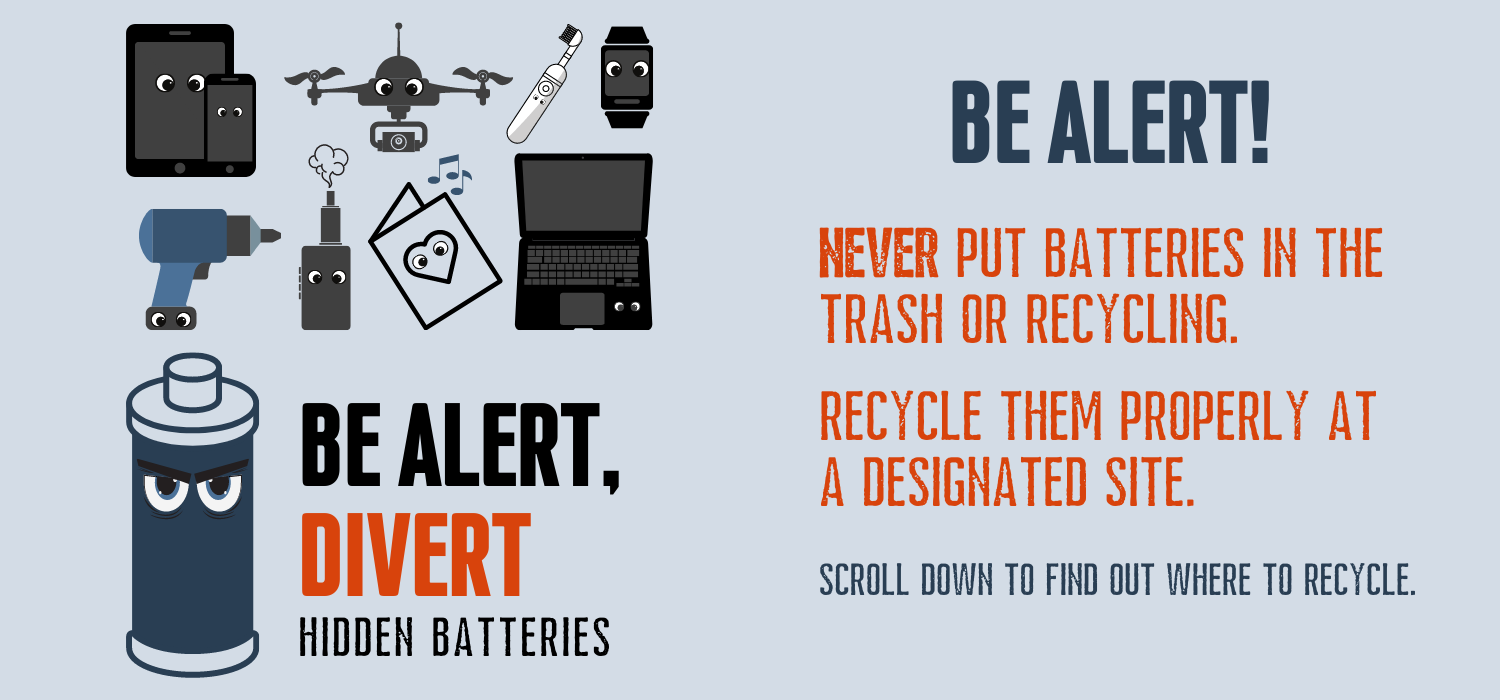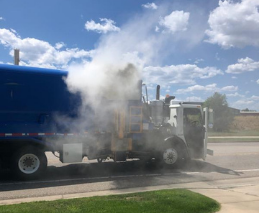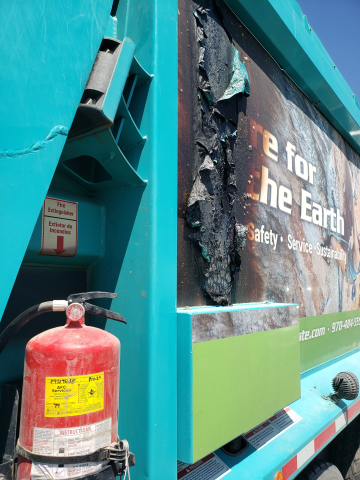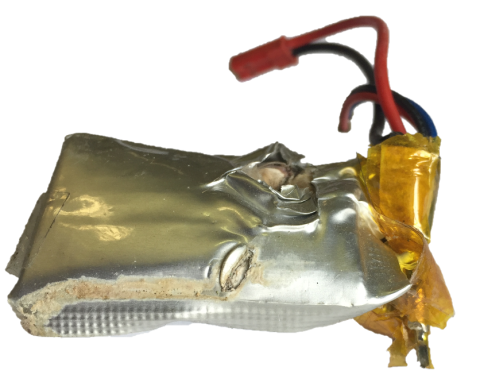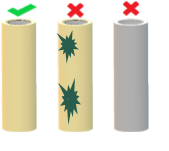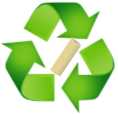Prevent Fires by Recycling Batteries Properly
Batteries ignite about 3-5 fires per month at the solid waste facility. Most of them are extinguished while they are still small, but all fires have the potential to be disastrous. The fire pictured above happened in August 2018. A well-meaning community member tossed a battery in the recycling bin, hoping to recycle it. At some point during transport or processing, the battery caused a spark, setting the surrounding paper and cardboard ablaze. A quick-thinking recycling worker noticed smoke and jumped into the bulldozer to push the inferno outside. First responders arrived and helped to stifle the flames before they spread to the building. You can help prevent fires by keeping batteries out of the trash and conventional recycling.
Help Spread the Word – Be Alert Toolkit
You can help spread the word that batteries don't belong in the trash or recycling by sharing the resources in the Be Alert Campaign Toolkit. More info about how to use it below.
Where to Recycle Batteries
Batteries can and should be recycled, but they cannot be recycled with the normal commingled or curbside recycling stream. Instead, recycle them at a trusted battery recycling site.
| Recycling Site | Accepted battery types | Website | Notes |
|---|---|---|---|
| Larimer County Household Hazardous Waste | Alkaline, lead-acid, lithium, rechargeable **Please note no Lithium batteries over 300wh will be accepted. | larimer.org/solidwaste/haz | Accepted only from Larimer County residents and businesses. Residents recycle for free. Fees apply for businesses. |
| Fort Collins Timberline Recycling Center | Alkaline, lead acid, lithium, rechargeable | fcgov.com/recycling/dropoff | Fees may apply. |
| Loveland Recycling Center | Alkaline, lead-acid, lithium, rechargeable | lovgov.org/services/public-works/trash-recycling | Free. Batteries are accepted from businesses on a case-by-case basis. |
| Call2Recycle | Alkaline, lithium, rechargeable | www.call2recycle.org/locator/ | Use the locator to find a drop-off and details. |
| Batteries Plus Bulbs | Lead-acid, lithium, rechargeable | www.batteriesplus.com/store-locator | Use the locator to find a drop-off and details. |
| Interstate Batteries | Lead-acid | interstatebatteries.com/recycling | |
| Rocky Mountain Battery | Lead-acid | rmbrecycling.com | Fees apply. |
Battery Identification
No Tape Required | Tape Both Ends with Clear Tape* | Bag Each Battery Separately | |
Alkaline | Lead Acid | Lithium | Rechargeable |
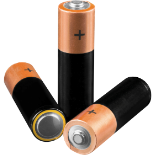 | 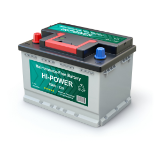 | 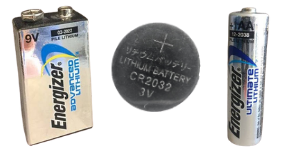 | 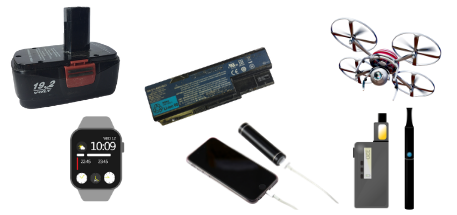 |
Most single-use batteries are alkaline. Find them in:
| Lead acid batteries (automotive batteries) are blocky and bulky. Find them in:
| Lithium batteries are single-use. They will be labeled "Lithium" or "CR." Find them in:
| Rechargeable batteries are made for repeated use. Find them in cordless devices like:
|
*Use clear tape so recycling workers can read the battery labels.
Help Spread the Word! – Be Alert Campaign Toolkit
You can help spread the word that batteries don't belong in the trash or recycling by sharing the resources in the Be Alert Campaign Toolkit.
How to use the toolkit:
Toolkit resources are stored in a Google Drive Folder. Click on the "Toolkit" button to explore!
Social Media Posts: Inside the social media posts folder you will find a folder with social media posts numbered 1-10. You will also find a word document that includes corresponding text for each post, and a recommended schedule for a 2 or 4-week social media campaign. Simply download the images folder and copy and paste the corresponding text into the posting tool on your social media platform to create a social media post.
Posters and Fact Sheets: Print and hang them around your home or workplace!
Newsletter Blurbs and Talking Points: Browse the document titled "Newsletter Blurbs and Talking Points" to find a short article or 2-3 sentence blurb that fits your newsletter, website, or publication.
Images For the Web: Find an image in 72 dpi to accompany your newsletter or web piece here.
Images for Newsletters: Find a higher resolution for print applications.
